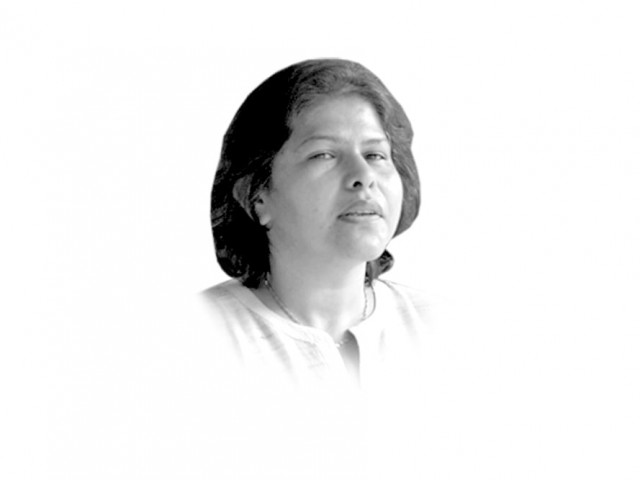Urbanisation in Pakistan and its consequences
Most of the cities developed randomly with no proper planning of infrastructure growth to make it an urban centre.

This is not just a lament about Islamabad but on the lack of urban planning in Pakistan in general. In fact, the story of Islamabad is about the mess that we find all over the country. Some commentators say that Pakistan’s urban growth rate is one of the fastest in South Asia and should hence be considered a symbol of progress and modernity. However, I recently found out that technically, Pakistan has no urban centre. This is because the definition of what constituted an urban centre was scrapped after the 1998 census. Demographers now believe that a new definition, which is yet to be agreed upon, may help in the next census but not help in future comparison as the definition would have changed since 1998. Seemingly, there is a committee of demographers that has met huddled together to thrash out a definition. The debate must be opened up as it directly pertains to the future of people living in the existing or future urban centres.
Apparently, the definition used in 1998 was very basic. A place with 5,000 or more people was to be categorised as an urban centre. Perhaps, the philosophy behind this was that once such a category was slapped on a place, the development of essential social and economic infrastructure would follow. But it is obvious that such a thing did not happen at all in many cases. Because of a lack of planning, even existing infrastructure began to collapse under growing population pressure. For instance, in Islamabad, the two main hospitals cannot cater to the city’s burgeoning numbers. Another example relates to the absence of parking in the city. Walking through the F-8 Markaz is a nightmare because a cellular company, which has set up its head office there, has not provided parking and so the vehicles of its employees clog the entire area and even make it a security hazard for pedestrians.
One could certainly go on and on about specific problems but there are some issues worth our attention as far as urbanisation is concerned.
First, thrilled by the idea of urbanisation as an imagined indicator of progress we have stopped thinking about our dire need to stop population growth. Even the existing youth bulge, which is considered a potential source of strength, could become a bane if not properly trained and educated.
Second, there is no planning for urbanisation — most of the cities have developed randomly with no proper planning for the kind of infrastructure growth that would make a centre of population feel like an urban centre. There is an absence of health and educational facilities especially in the intermediate and small cities, which then means a correspondingly significant propensity for people living there to migrate to the large urban centres.
Third, most large and intermediate cities seem to be undergoing vertical or horizontal growth, eating into the rural areas or agricultural land that lies in their hinterland. According to one estimate, over 60,000 acres of agricultural land have been eaten up by urban sprawl. There are some for whom the reduction of rural space is not an issue and they cite it as an example of progress, which it is certainly not, mainly because growth of what looks like urban centres without a parallel shift in economic patterns does not necessarily indicate progress.
Fourth, the increase in urbanisation is not necessarily accompanied by a conversion of mercantile capital to industrial capital. In fact, the horizontal expansion of cities is a case of an increase in mercantile capital and this is indicated in the booming real estate industry. Cities are not developed around economic activity like industries but have grown out of and around bazaars and a bazaar culture which in itself means mercantilism. The only other viable economic activity seems to be real estate that has attracted owners of agricultural land around cities to convert their land into housing schemes or to sell it for this purpose. This is not even viable capital since in the absence of sustainable economic activity, people tend to waste the accumulated capital very rapidly by spending it in consumerism. More important, such housing schemes have not managed to solve the shortage of houses. Pakistan has a shortage of about five million houses and the housing schemes that one sees are meant for the middle or upper-middle classes and do not cater to those from the lower or lower-middle classes.
Fifth, there is nothing that can serve as a melting pot as far as the increasing class divide is concerned. Normally, it is a public transport system which tends to bring people together. Karachi used to have a well-functioning tram system for public transport but it was scrapped years ago and was not replaced with anything else. Lahore has just started a metrobus project that will connect some parts of the city. However, there is an utter lack of planning for a public transport system that would also be fairly safe for all. Such a system would help in melting down the huge class divide that exists in every Pakistani city.
Finally, urban planning must also address the problem that would eventually occur due to the various kinds of natural divisions that include class, ethnic, sectarian and other differentiations. Right now, Karachi seems to be the only cosmopolitan city suffering from violence due to these internal divisions, which have been compounded by the burden of an increasing population. However, most of the other major cities, mostly in Punjab, have at least two visible dividing layers: ethnic and class. As these other cities expand so will their problems, including those that result in violence. Hence, now is the time to think deeply about urbanisation and its consequences.
Published in The Express Tribune, November 22nd, 2012.
















COMMENTS
Comments are moderated and generally will be posted if they are on-topic and not abusive.
For more information, please see our Comments FAQ